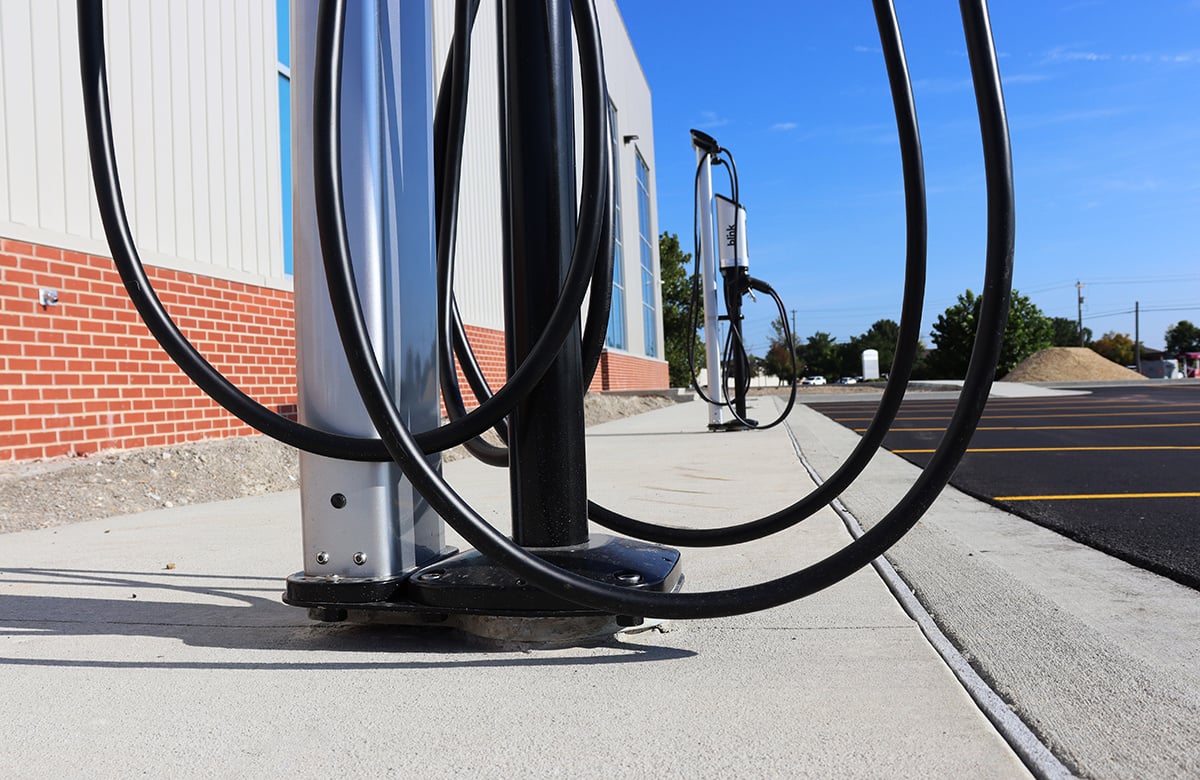 The number of Electric Vehicles (EV’s) on the road is ever increasing. As such, so are the number of requests for designing foundations for EV chargers. EV foundations are being installed in commercial parking lots, at distribution hubs for shipping giants, and even outside residential homes.
The number of Electric Vehicles (EV’s) on the road is ever increasing. As such, so are the number of requests for designing foundations for EV chargers. EV foundations are being installed in commercial parking lots, at distribution hubs for shipping giants, and even outside residential homes.
Chance EV Foundations are an engineered helical pile base. Made from traceable, prime mill-direct steel, Chance foundations are screwed into the ground using a torque motor and standard construction equipment. Ground personnel verify that the operator is installing the anchor level and plumb so the resulting base will provide reliable, level support for the EV foundation. Chance EV foundations can be installed before concrete is poured or retrofitted in an area where the existing concrete has been cored. Once the foundation is in the ground, it is ready to be loaded and wired. Alternatively, a top plate can protect the public until the charger is ready to be installed.

Each foundation must be designed to carry the unique loads of the EV charger. There are a few pieces of information that are required to ensure the right EV foundation can be designed for your project.
1. SIZE
First, the overall dimensions of the charger are important. The largest loads that are applied to an EV charger are typically going to be by the wind. A typical design wind speed in the US is between 90 and 150 mph depending upon location. It is critical that the foundation be sized large enough to handle the load during high wind events. If the overall size of the charger is unknown, it is difficult to determine the overall load due to wind and thus ensure the capacity of the foundation.
 A row of foundations installed. Foundations will be wired through cableway openings and up through the hollow steel shafts before concrete is poured.
A row of foundations installed. Foundations will be wired through cableway openings and up through the hollow steel shafts before concrete is poured.
2. SOIL
Second, it is important to know the soil conditions. An owner may not be able to justify the cost of doing soil investigations to determine the strength of the soil, but even a simple description of the soil is helpful. Is the soil on the project site similar to walking on the beach (sand) or does it stick together like the clay in art class (silt or clay)? It is not recommended to just say use “typical” or “average” soils. The United States has a wide variety of soils in terms of type and strength. Someone living in the “heavy water” conditions of southern Louisiana has a very different opinion of what “typical” soil is compared to someone living in sandy south Florida. When no soil description is possible, there are tools available that can provide some information about the soils from a project location, so be sure to provide an accurate description of the installation location.
 Concrete is poured around the foundations at this new building construction site.
Concrete is poured around the foundations at this new building construction site.
3. STYLE
Lastly, and probably most importantly, the bolt pattern of the EV charger base plate can be critical. There is no standard bolt pattern for EV chargers. Every charger has a different connection pattern—Every Charger. Sometimes, the charger bolt pattern even changes between different chargers in a single series or size level! If the foundation is being built specifically for a certain charger, it is critical to ensure that the specified charger is purchased and not substituted for an alternative. Another option is to purchase one of the Chance “universal” EV charger foundations. These foundations have a 13” square baseplate with only two drive holes. The holes required for bolting the EV charger to the foundation are then drilled into the baseplate wherever they are needed. This is a good option when the charger base bolt pattern is unknown or likely to change.
 Electricians mount and wire the EV charger foundation on the exposed base plate.
Electricians mount and wire the EV charger foundation on the exposed base plate.
Once this information has been gathered, a design for the EV charger foundation can typically be turned around in 2-3 days. Reach our engineering team by sending the necessary information to civilconstruction@hubbell.com.


